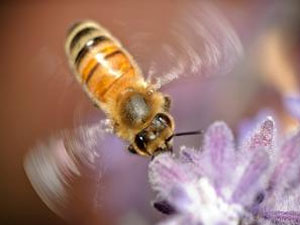英国《Nature》:2010年3月25日出版
时间:2010-03-26 阅读: 我要评论:
Article:
http://www.nature.com/nature/journal/v464/n7288/full/nature08830.html
Analysis of Drosophila TRPA1 reveals an ancient origin for human chemical
nociception pp597-600
Reactive electrophiles are noxious chemicals, such as acrolein in cigarette
smoke, and are detected by the ion channel TRPA1 in humans. Here it is shown
that TRPA1 channels sense these chemicals in the gustatory chemosensory
neurons
of fruitflies and mosquitoes, too. Further findings show that, unlike with
other chemical senses such as smell or taste, the detection of reactive
electrophiles relies on an ancient sensor that has been conserved in
molecular
detail through some 500 million years of evolution.
Kyeongjin Kang et al.
doi:10.1038/nature08848
Abstract:
http://www.nature.com/nature/journal/v464/n7288/abs/nature08848.html
Article:
http://www.nature.com/nature/journal/v464/n7288/full/nature08848.html
Primary contribution to zebrafish heart regeneration by gata4+
cardiomyocytes
pp601-605
Zebrafish are able to replace lost heart muscle efficiently, and are used as
a
model to understand why natural heart regeneration - after a heart attack,
for
instance - is blocked in mammals. Here, and in an accompanying paper,
genetic
fate-mapping approaches reveal which cell population contributes prominently
to cardiac muscle regeneration after an injury approximating myocardial
infarction. The results show that cardiac muscle regenerates through
activation
and expansion of existing cardiomyocytes, without involving a stem-cell
population.
Kazu Kikuchi et al.
doi:10.1038/nature08804
Abstract:
http://www.nature.com/nature/journal/v464/n7288/abs/nature08804.html
Article:
http://www.nature.com/nature/journal/v464/n7288/full/nature08804.html
Zebrafish heart regeneration occurs by cardiomyocyte dedifferentiation and
proliferation pp606-609
Zebrafish are able to replace lost heart muscle efficiently, and are used as
a
model to understand why natural heart regeneration - after a heart attack,
for
instance - is blocked in mammals. Here, and in an accompanying paper,
genetic
fate-mapping approaches reveal which cell population contributes prominently
to cardiac muscle regeneration after an injury approximating myocardial
infarction. The results show that cardiac muscle regenerates through
activation
and expansion of existing cardiomyocytes, without involving a stem-cell
population.
Chris Jopling et al.
doi:10.1038/nature08899
Abstract:
http://www.nature.com/nature/journal/v464/n7288/abs/nature08899.html
| 《Nature》目录要览 — 2011-04-28出版 |
| 《Nature》目录要览:2011-01-20出版 |
| 《Nature》目录要览:2010-12-23出版 |
| 《Nature》目录要览:2010-12-16出版 |
| 《Nature》目录要览:2010-12-09出版 |
| 《Nature》目录要览:2010-12-02出版 |
特别声明:本文转载仅仅是出于传播信息的需要,版权归原作者所有,并不意味着代表本网站观点或证实其内容的真实性; 如其他媒体、网站或个人从本网站转载使用,须保留本网站注明的“来源”,并自负版权等法律责任; 作者如果不希望被转载或者联系转载稿费等事宜,请与我们接洽:service#environmentor.cn(请将#改为@)。
来源:Nature 作者:Admin (环境人 Environmentor.Cn)





